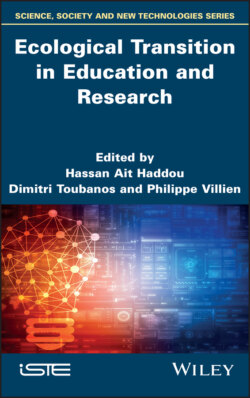Читать книгу Ecological Transition in Education and Research - Группа авторов - Страница 15
1.3. Sustainable development
ОглавлениеThe end of the 1990s heralded the arrival of what is generally known as the “environmental crisis”, and the “climate crisis” in particular. For those who are still skeptical, here are a few figures: in 1970, there was a concentration of 330 ppm of CO2 in the air. At 350 ppm, climatic stability has been exceeded, and it is not certain whether we can go back. Today the level is around 410 ppm CO2, which is huge. If nothing changes, in 2100, carbon dioxide concentrations will be between 730 and 1020 ppm, depending on the scenario adopted. The last time the 400 ppm level was exceeded was 3 to 5 million years ago: the temperature was 3–4°C higher and the sea level was 5 to 20 m higher than at present.
Architects and the world of construction are responsible for 50% of exploited natural energies, 45% of total energy consumption, 40% of generated waste and 30% of greenhouse gas emissions. We are therefore directly concerned and cannot remain indifferent to these questions.
In this environmental crisis, the buzzword “sustainable development” appeared. People used to say “I am building a passive house, so I am doing something sustainable”, or “I am using ecological materials, so I am doing something sustainable”. In fact, these are all varied aspects of sustainable development, but if this same passive house is 5 km from public transport and you park your 4x4 in front of your garage every day, the whole setting is not really sustainable.
Gro Harlem Brundtland, the first female Prime Minister in Europe, Norwegian and president of a commission appointed by the United Nations, concluded very quickly that the problem of sustainable development was not exclusively related to the environment. The commission quickly gave an official definition of sustainable development, which is a bit convoluted, but not bad at all. “Sustainable development is development that meets the needs of the present without compromising the ability of future generations to meet their own needs”. This means that we can continue to develop, but we must change the way in which we do it.
There was also the major Rio conference which defined around 20 principles in social, political, economic and ecological dimensions. Europe has retained some of them, abandoning others which concern us less, such as the right to education (fairly acquired in Europe), or political notions (in the sense that Europe is a democracy). There are still the social, economic and ecological dimensions.
From 2000 onwards, the “Architecture and Climate” team wondered how to define sustainable development for architects. After three years of reflection, we propose:
Architecture is ethically part of its social, political, economic and environmental surroundings when it benefits from the advantages (of these four areas), while counterbalancing the inevitable disadvantages that these surroundings may present (for example, if you are in a place where there is a lot of noise, there is an acoustic disadvantage), but, above all, by letting the surroundings benefit from what we, the architects, generate. If you are planning a building that does not add anything to the environment where you are building it, do not build it. Likewise, if a building can be demolished to add value to its location, demolish it.
Therefore, architecture falls within different scales, ranging from the material to the building, to its environment, its district, its city, its territory. Talking about the building alone, like the glass tower deposited by helicopter in Sao Paolo, is over.
